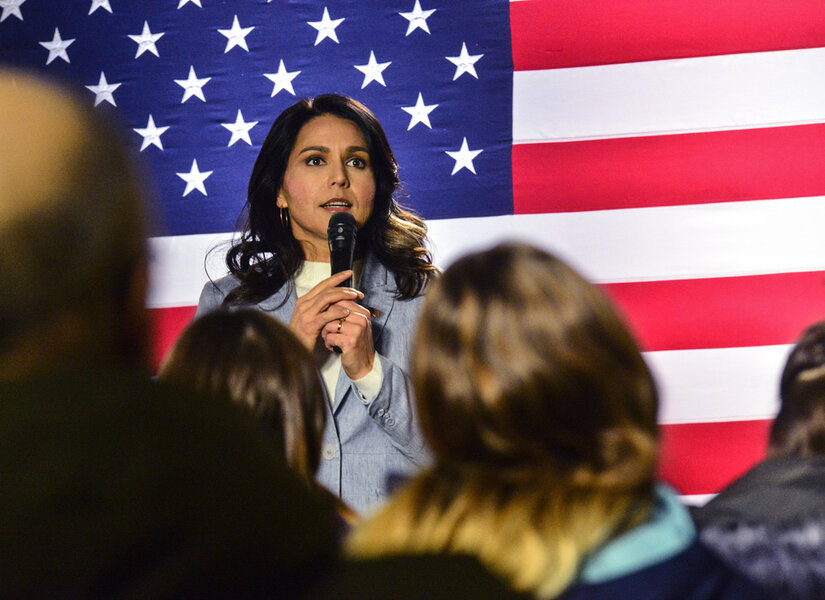The unhailed progress for women in politics
Loading...
What a difference a few weeks makes. No, not because of the worldwide health crisis. Rather America’s political map has changed quickly too.
On Thursday, when Tulsi Gabbard became the last female candidate to drop out of the race for the Democratic presidential nomination, it confirmed to many that women had hit a glass ceiling at the polling booths. Were primary voters concerned that a woman couldn’t defeat President Donald Trump, even though Hillary Clinton won the popular vote in the 2016 election? Or was the slate of women candidates just not good enough to be president?
The picture for women dramatically changed again March 15 when former Vice President Joe Biden pledged to select a woman as his running mate. Since Mr. Biden speaks of himself as a “bridge” president who would most likely serve only one term, if he is elected his running mate would suddenly be in a strong position to win the 2024 Democratic nomination.
Sens. Elizabeth Warren, Amy Klobuchar, Kamala Harris, and other women presidential candidates have already introduced themselves to voters. But Mr. Biden could easily find a qualified candidate for vice president elsewhere, among governors such as Michigan’s Gretchen Whitmer or even among U.S. representatives, such as Val Demings of Florida, who gained visibility as a manager at the impeachment hearings.
The abundance of choices is the result of a continuing surge in the number of women holding public office. A record 26 women serve among the 100 U.S. senators (17 Democrats, 9 Republicans). The U.S. House of Representatives (435 members) includes 101 women (88 Democrats, 13 Republicans), just below the record of 102. And nine women (6 Democrats, 3 Republicans) sit in state houses among the 50 governors, tying the record high.
Farther down the political ladder, roughly 2,145 women now serve in the 50 state legislatures, 29% of the total members, according to the National Conference of State Legislatures. That’s up from 25.3% in 2018. In Nevada, women hold a majority of seats in the state legislature, and they come close in Colorado (47%).
Women in public office should be such a common and unremarkable thing that the topic rarely deserves a thought or mention. That doesn’t necessarily mean some kind of numerical quota is reached, but rather a widespread sense that gender no longer plays a role in the voting booth. Movement on the path to that future will receive a strong boost when a woman is finally elected to the nation’s highest office.
The current times need leaders with qualities sometimes more identified as feminine (compassion, empathy) just as much as courage or strength are required. The good news is that officeholders of both genders have the opportunity to express all of these qualities.





